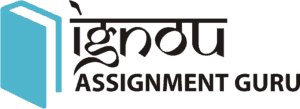DNHE-1 in English Solved Assignment 2023 (Part A)
ASSIGNMENT 1 (TMA-1)
Course Code: DNHE-1
Assignment Code: DNHE-1/AST-1/TMA-1 /23
For January 2023 session last date of Submission: 30th April, 2023
For July 2023 session last date of Submission: 30th October, 2023
Maximum Marks: 100
| Title Name |
DNHE-1 Solved Assignment 2023 |
| University | IGNOU |
| Service Type | Solved Assignment (Soft copy/PDF) |
| Course | Diploma Programme in Nutrition and Health Education (DNHE) |
| Language | ENGLISH |
| Semester | 2022 Course: Diploma Programme in Nutrition and Health Education (DNHE) |
| Session | January 2023 and July 2023 |
| Short Name | DNHE-1 |
| Assignment Code | DNHE-1/AST-1/TMA-1 /23 |
| Product | Assignment of DNHE 2023 (IGNOU) |
| Submission Date | For January 2023 session last date of Submission: 30th April, 2023 For July 2023 session last date of Submission: 30th October, 2023 |
Assignment-1 consists of two parts and is of 100 marks. The weightage given to each part is
indicated in the brackets
A) Descriptive Type Question
B) Application Question (AQ)
Part A: Descriptive Type Question
(60 Marks)
(40 Marks)
(60 Marks)
All questions are compulsory
1. a) Define health. Elaborate on the four dimensions of health.
b) Explain the functions, digestion and absorption of carbohydrates in our
body.
(3)
(3)
2. Differentiate between the following terms and give suitable examples for
each:
a) Saturated and Unsaturated fatty acids
b) Water soluble and fat soluble vitamins
c) Essential and non essential amino acids
(2)
(2)
(2)
3. a) Give the functions, food sources and deficiency of iron.
b) “Foods can be classified based on their functions”. Explain briefly.
(3)
(3)
4. a) What is food budgeting? List the factors that influence food
expenditure.
b) Enlist the steps in the preparation of a short -term monthly budget. (3)
(3)
5. Enumerate any 3 criteria for selection of each of the following foods:
a) Cereals and millets
b) Fats and Oils
c) Milk and milk products
(2)
(2)
(2)
6. a) Foods can be classified based on perishability. Comment on the
statement giving suitable examples.
b) Elaborate on any 3 techniques used for preservation of food by
bacteriostatic method
(3)
(3)
7. a) What is food adulteration? Explain with examples.
b) Enumerate any simple test by which adulteration can be detected in :
i) Sand or dirt in jaggery
ii) Papaya seeds in black pepper
(3)
(1.5+1.5)
8. Enlist the clinical manifestations, causes and treatment of the following
nutrition related disorders:
a) A 7 year child suffering from Xerophthalmia
b) A 5 year girl suffering from Vitamin D deficiency
(3)
(3)
9. Explain briefly:
a) Dietary management of Diarrhoea
b) Dietary management of Coronary Heart Disease
(3)
(3)
10. a) Write about the objectives and components of MDM Programme
b) Enumerate the 4 major methods used to assess nutritional status of
individuals. Discuss one in brief.
(3)
(2+1)
Section B – Application Question (AQ) (40 marks)
1. Based on the steps involved in planning balanced diet, prepare a diet for a pregnant woman
belonging to low socio-economic group. (Refer to DNHE 1, Vol 2, Practical Manual -Part 1,
Section 6)
(10)
2. Record height and weight of 10 (ten) adults in your locality and determine their body mass
index (BMI). Classify them to identify their health status based on WHO classification (Refer
to DNHE 1 Vol 2, Unit 21, Table 21.1)
(10)
3. Visit your locality and identify 10 individuals who are suffering from diabetes mellitus. In a
table record their name, age, gender and the food restrictions made by them in their diet.
Analyse whether their diet is in accordance to dietary modifications suggested for diabetes..
(Refer to DNHE 1 Vol 2, Unit 21)
(10)
4. Visit an Anganwadi functioning under ICDS programme in your neighbourhood. Write the
name/age/gender of the beneficiary who came to the Anganwadi that day and services
provided to them in that centre. Comment on the services followed, and not being provided.
(Refer to DNHE 1 Vol 2, Unit 24)
The Advantages of studying IGNOU Solved Assignments are given below:
- Easy Accessibility: IGNOU solved assignments are easily accessible online, which means students can access them anytime and anywhere.
- Comprehensive Solutions: The solved assignments provide comprehensive answers to the questions asked in the assignments, which makes it easier for students to understand and study the topics.
- Cost-Effective: The solved assignments are available at a very economical rate, which makes them a great option for those who are on a budget.
- Reference Material: The solved assignments can be used as reference material for further study, as they provide detailed answers to the questions asked.
- Time-Saving: The solved assignments save a lot of time for students as they do not need to spend time researching and writing the answers themselves.
Can I score good marks by getting solved assignments?
Yes, you can get good marks by getting the Solved Assignment as it contains the answers to the questions asked in the assignment and will help you to understand the concepts better and score better.
Read more: How to Make IGNOU Solved Assignment?




